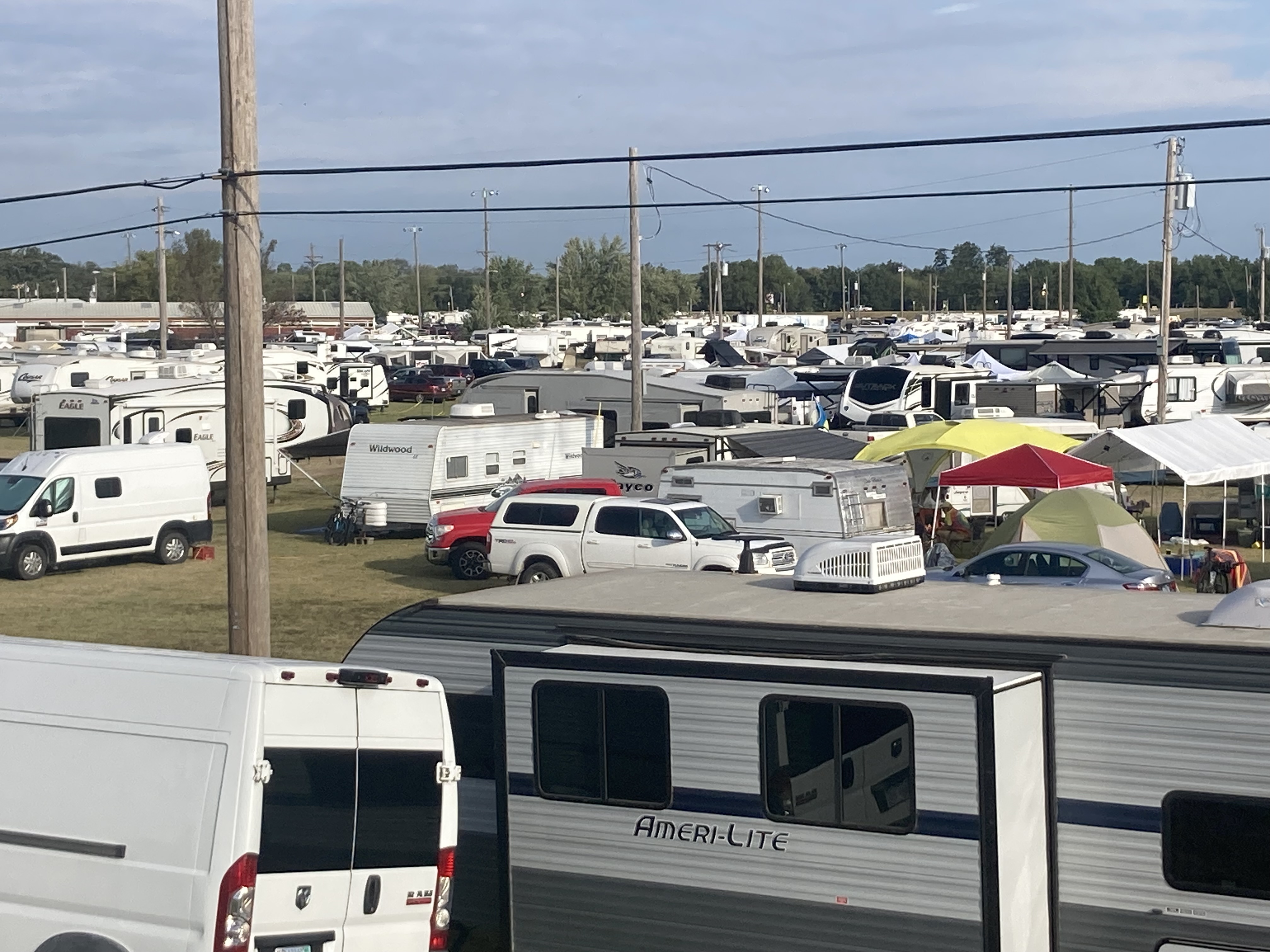Following the Crowd
Contact
University of Arkansas System Division of Agriculture
Cooperative Extension Service
2301 S. University Ave.
Little Rock, AR 72204

Following the Crowd
I like to fool myself into believing I’m a rugged individualist, but in truth, I just follow a different crowd than the mainstream. I write this from amongst a crowd of about 15,000 close friends who have gathered in Winfield, Kansas for the 51st Walnut Valley Festival. Originally defined as a bluegrass festival, it has morphed into an eclectic event with musicians performing the kind of music I like to listen to.
We humans are social animals with tribal tendencies, so it is not surprising we align ourselves with likeminded souls. We see this in all kinds of ways, this self-sorting. The church, clubs or schools we attend or friends we hang with are all a product of this conscious — and sometimes not — self selection. I keep coming back to Winfield because I feel at home here. Welcomed, even though I don’t know a soul after 20 some years of attendance.
And there is something about a mass gathering that tends to energize us. Psychologists theorize that in our evolutionary history as hunter-gatherers we were always alert for dangers. Come together in a safe, familiar crowd and we can relax our guard. But come together in a mass gathering where there are lots of strangers, and the hormones stimulated by all this extra (but unconscious) watchfulness gooses our system.
But not just any mass gathering will do. If the group is like-minded and shares your general worldview, you can be comfortable in the crowd while still maintaining a measure of watchfulness. But, were I to find myself at a heavy metal concert populated by a bunch of skinheads, I’d be decidedly uncomfortable and the extra measure of watchfulness needed would speed my departure.
Crowds increase the enjoyment of an event. Watching a movie such as Avatar in a packed movie theater is a different experience than watching it alone on a big-screen TV. The oohs and aahs, the laughs and the screeches when something scary happens convey cues we unconsciously use as we watch the action. The same thing happens at a music concert or football game, and we get more pleasure from the event because we unconsciously recognize others also thought the fingerwork of the guitarist or forward pass of the player was special.
The menu of choices for these group events is bewildering but reflects the diversity and age-related preference of a society. My daughter and grandchildren are regulars at Renaissance fairs where they dress up as medieval characters. Other family members never miss a Razorback football game, an event that personally bores me to death. Some in my family question my sanity in driving thousands of miles to attend the annual Penstemon Society meeting. But each of these kinds of events speaks to the individual and provides a measure of happiness.
But “crowd think” is real and can be scary. My most vivid memory of its power was during the run up to the first Gulf War in the 1990s. We had all been watching the events in the Middle East and were well aware trouble was brewing, but when the first President Bush decided to launch the war, public opinion was more than 90 percent in favor. I fell in with the majority opinion, but afterward spent a lot of time thinking about how crowd think fed on itself and ratcheted up the rush to war. But fortunately, most folk festivals I attend are pretty tame events with a mellow following of people who come away from the event recharged.
So I’ve got to run. I’ve already missed the first two sets, and with only about 40 hours of live music on five stages ahead of me, I don’t want to miss any more.
